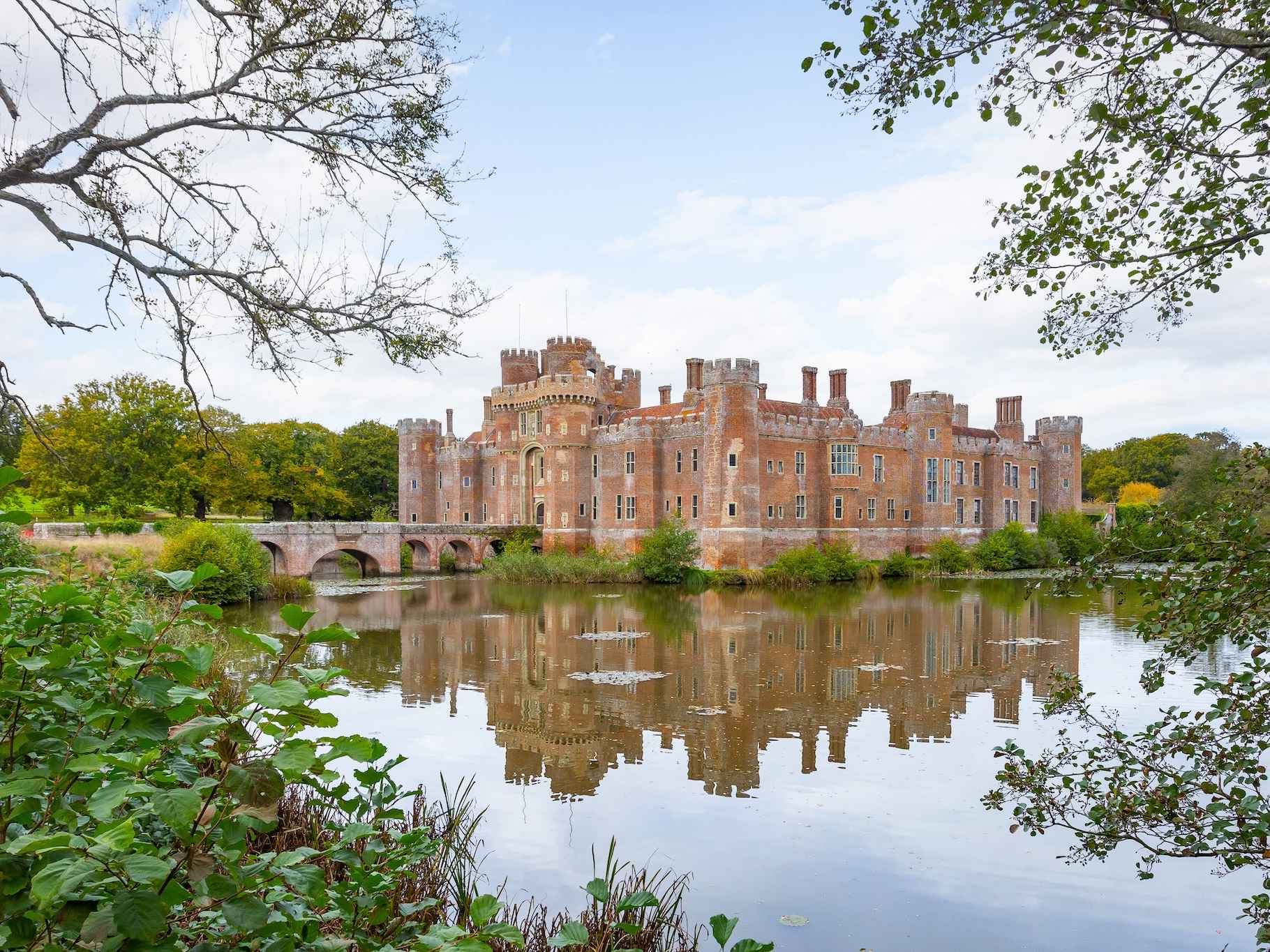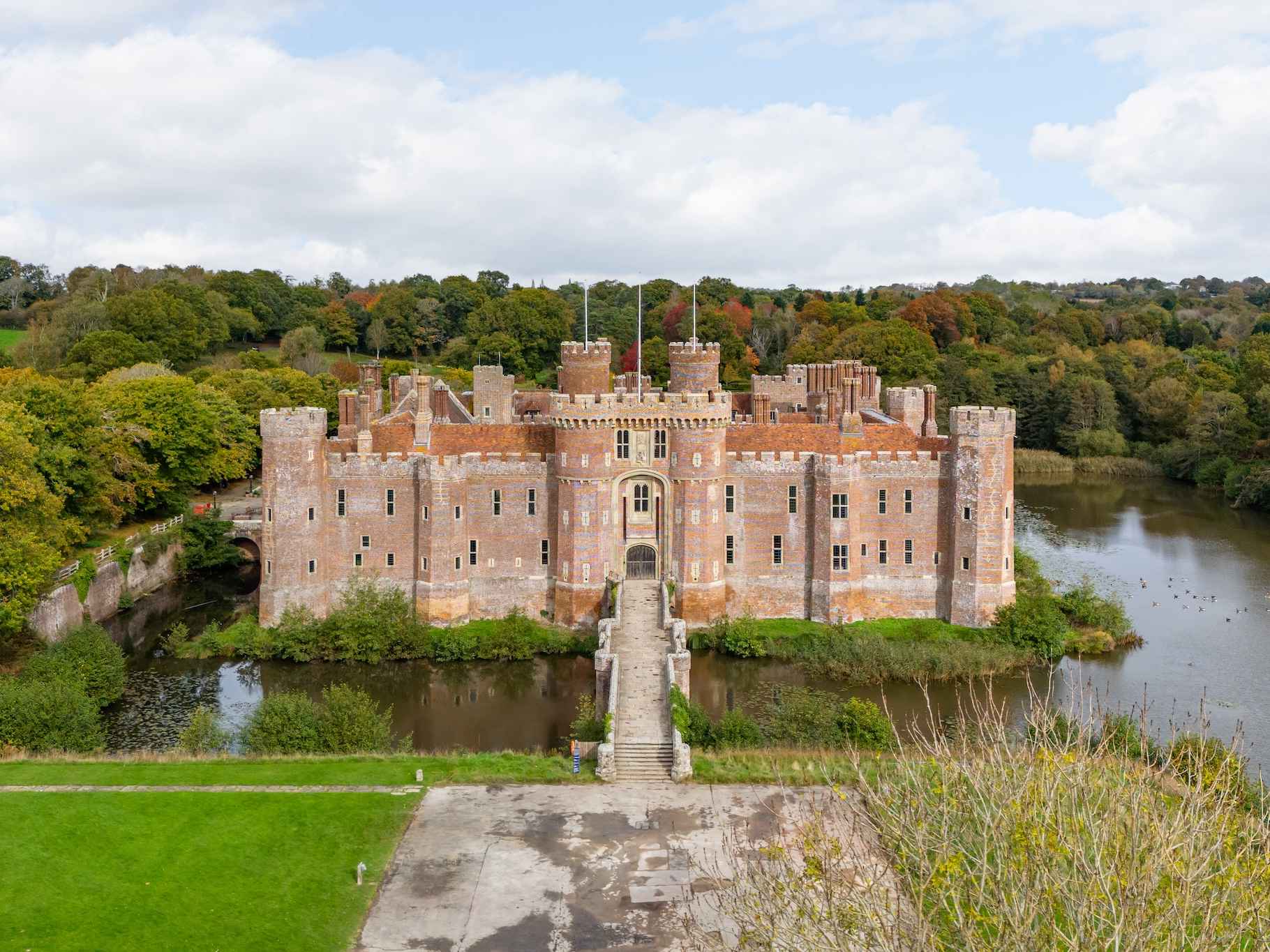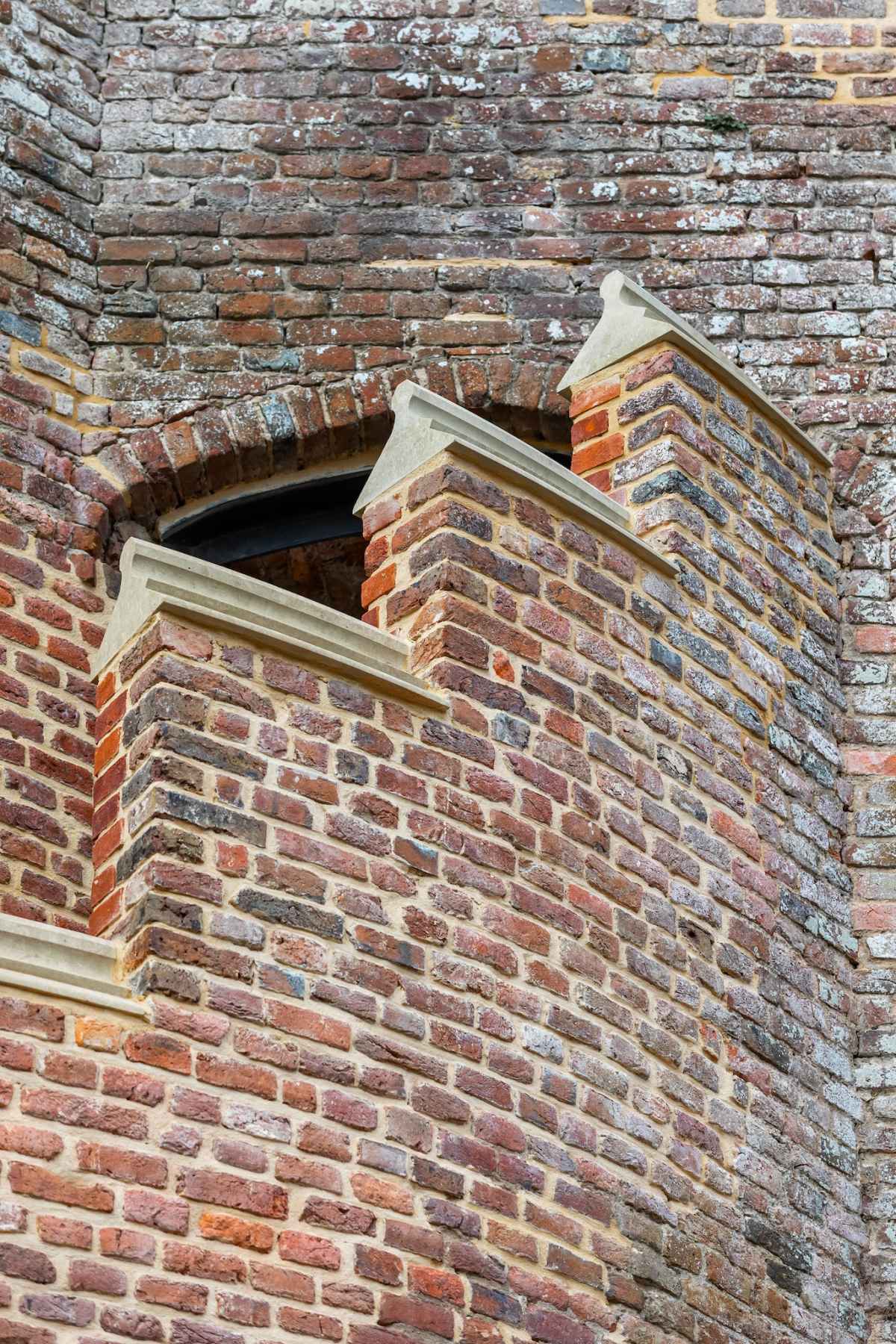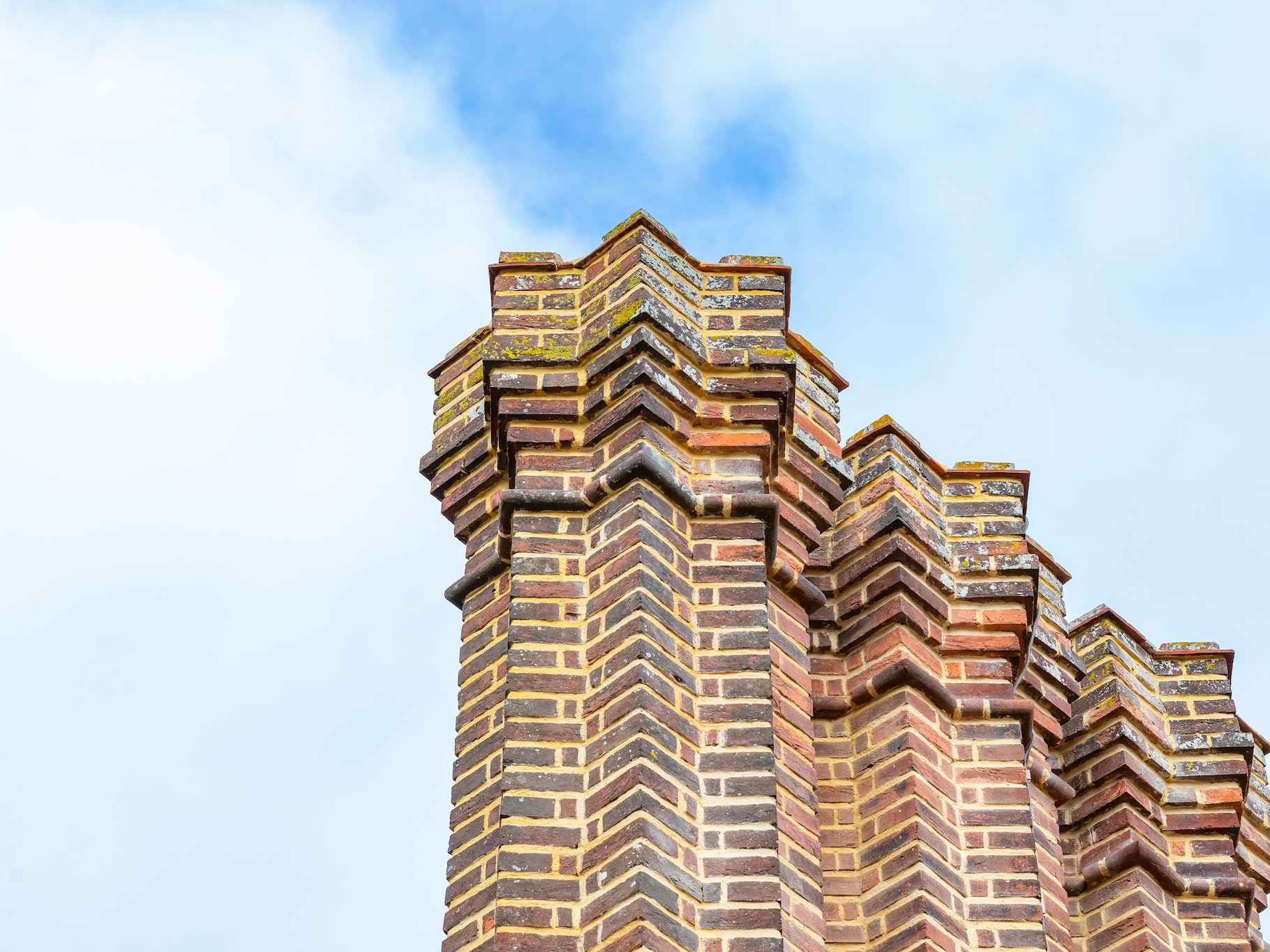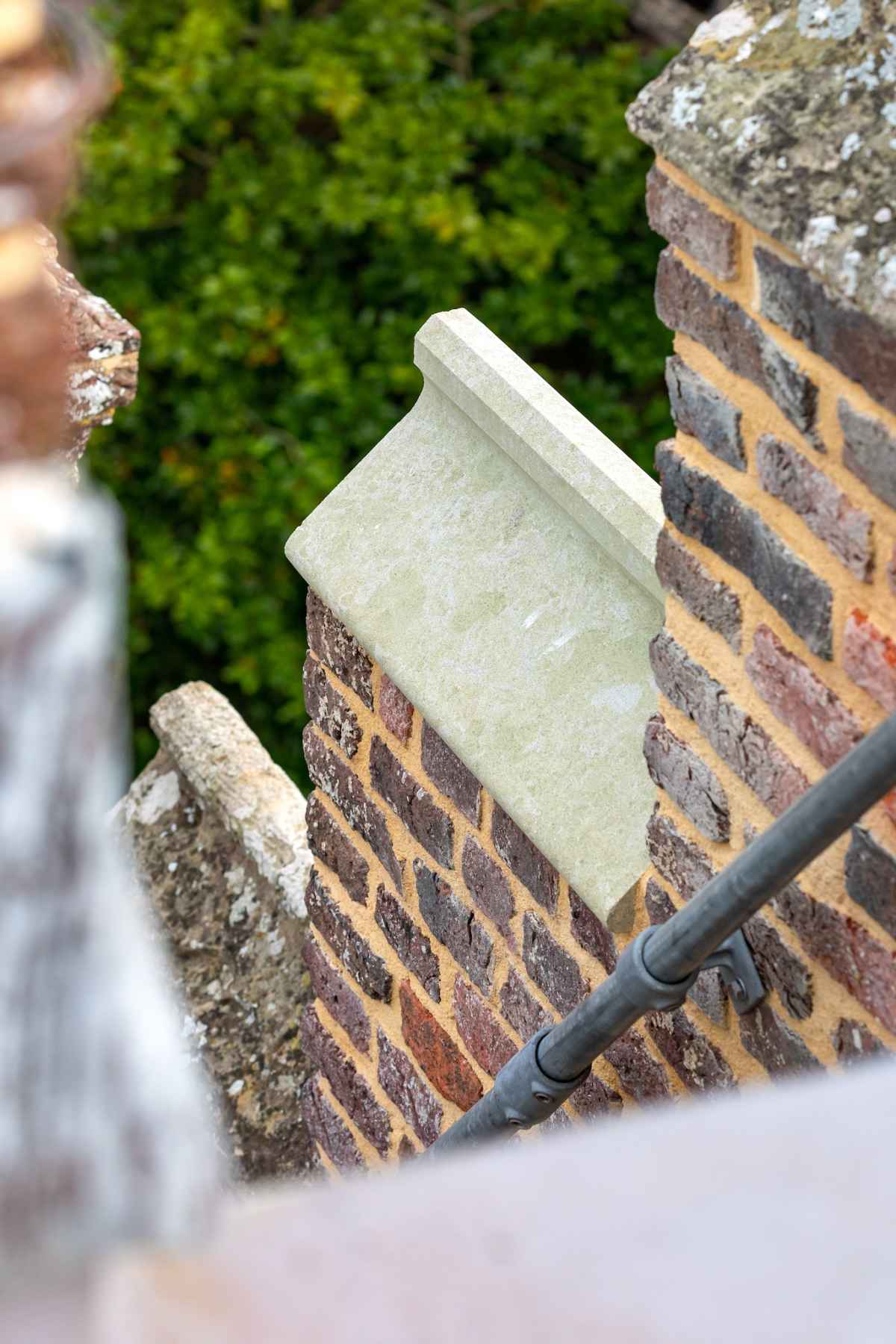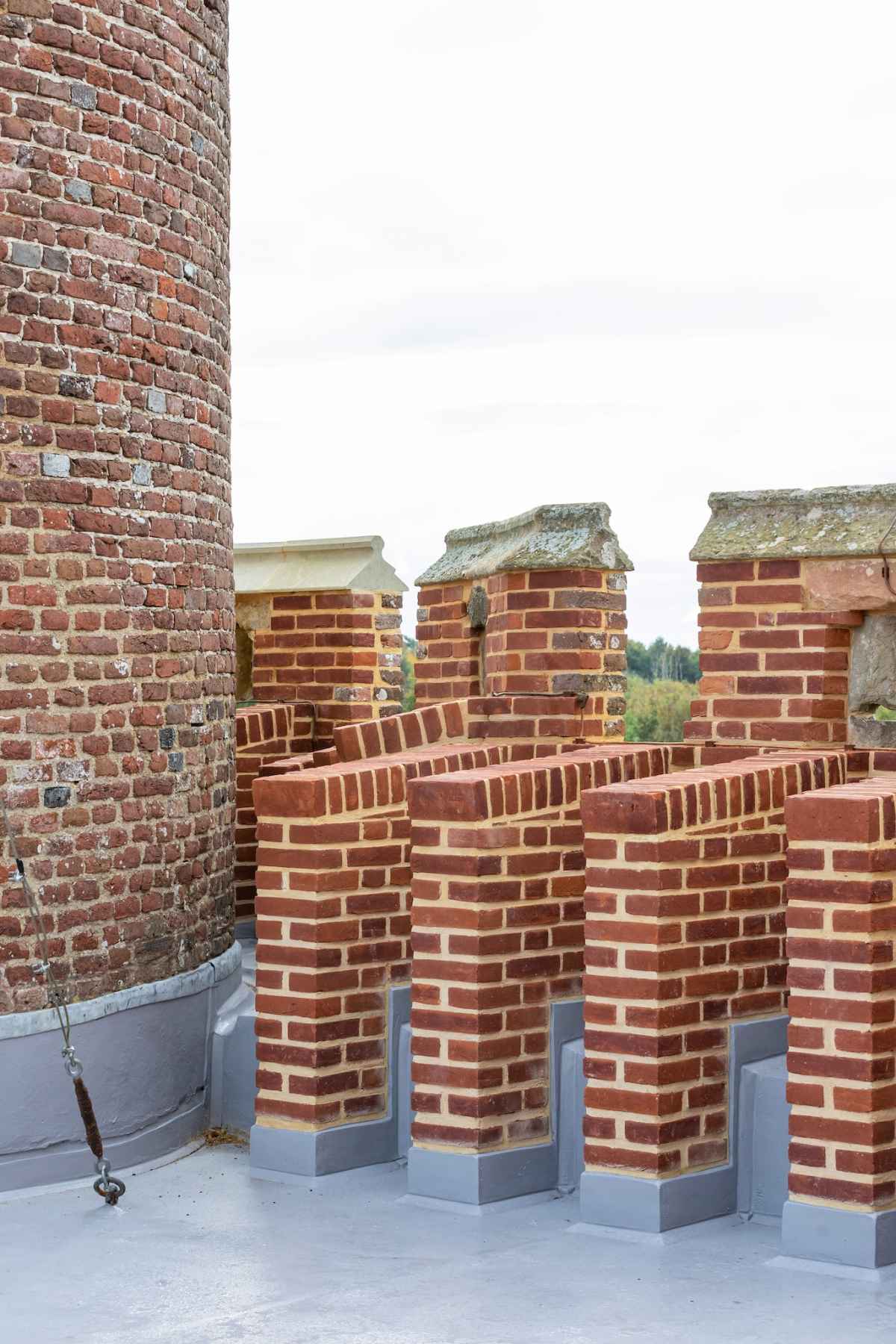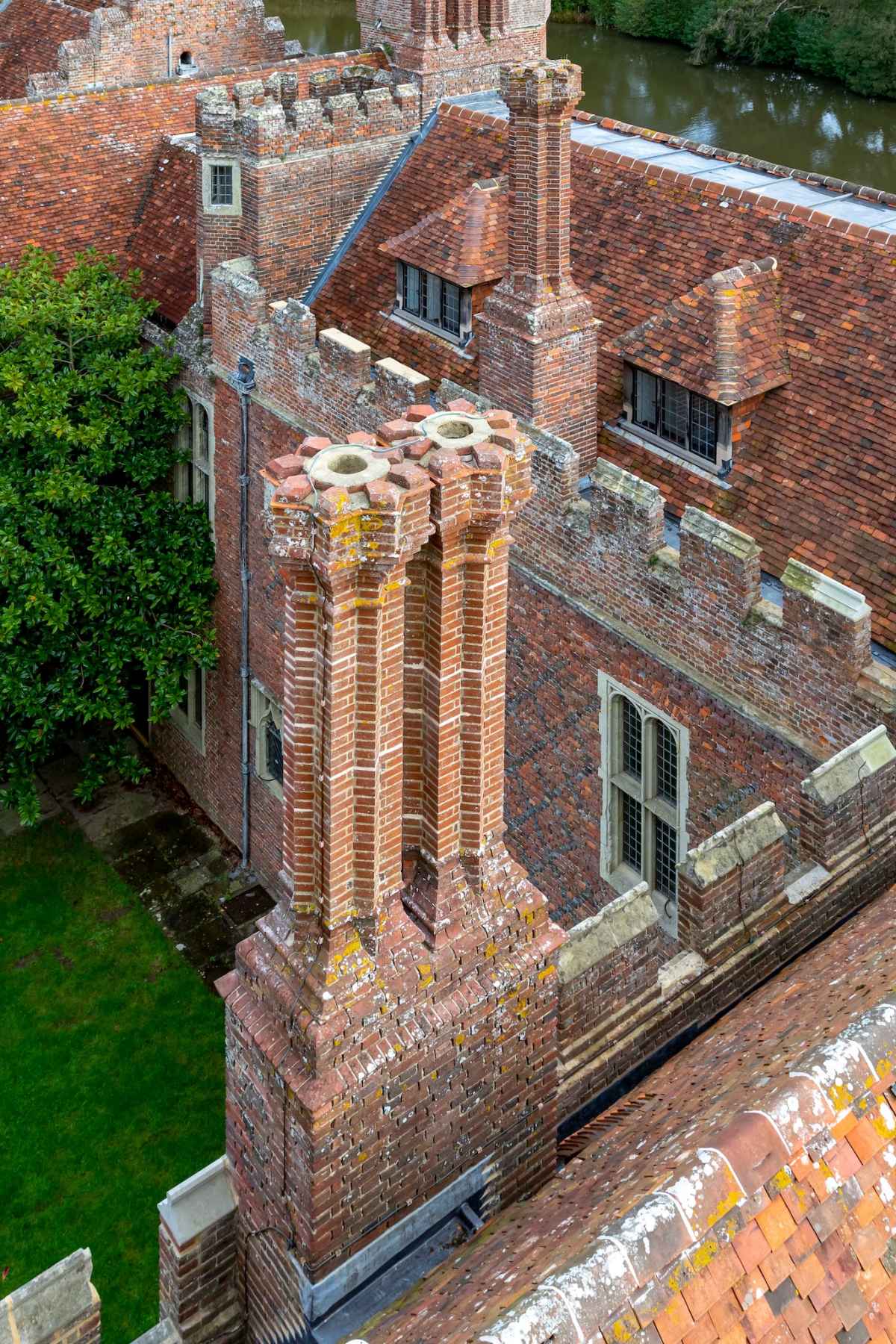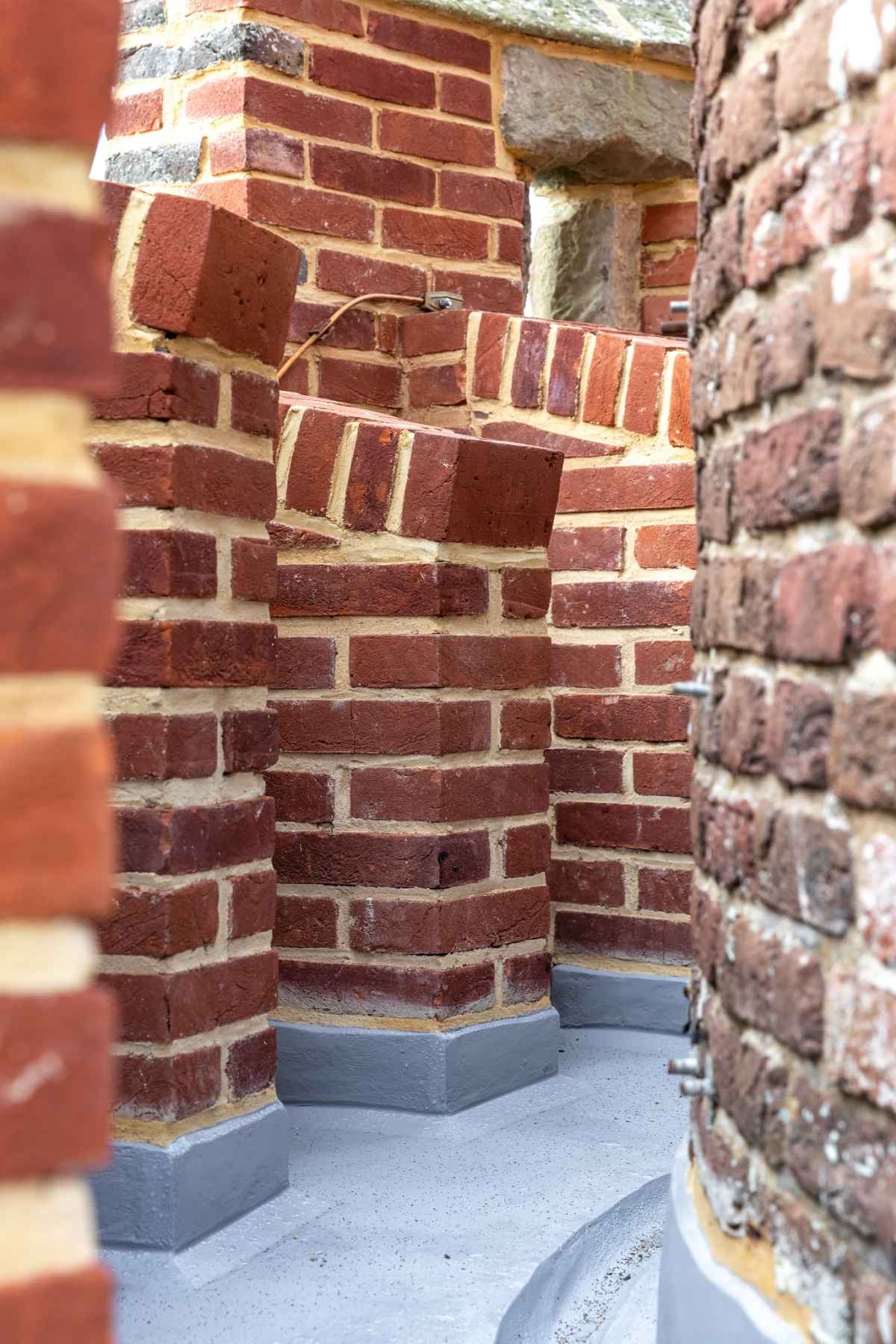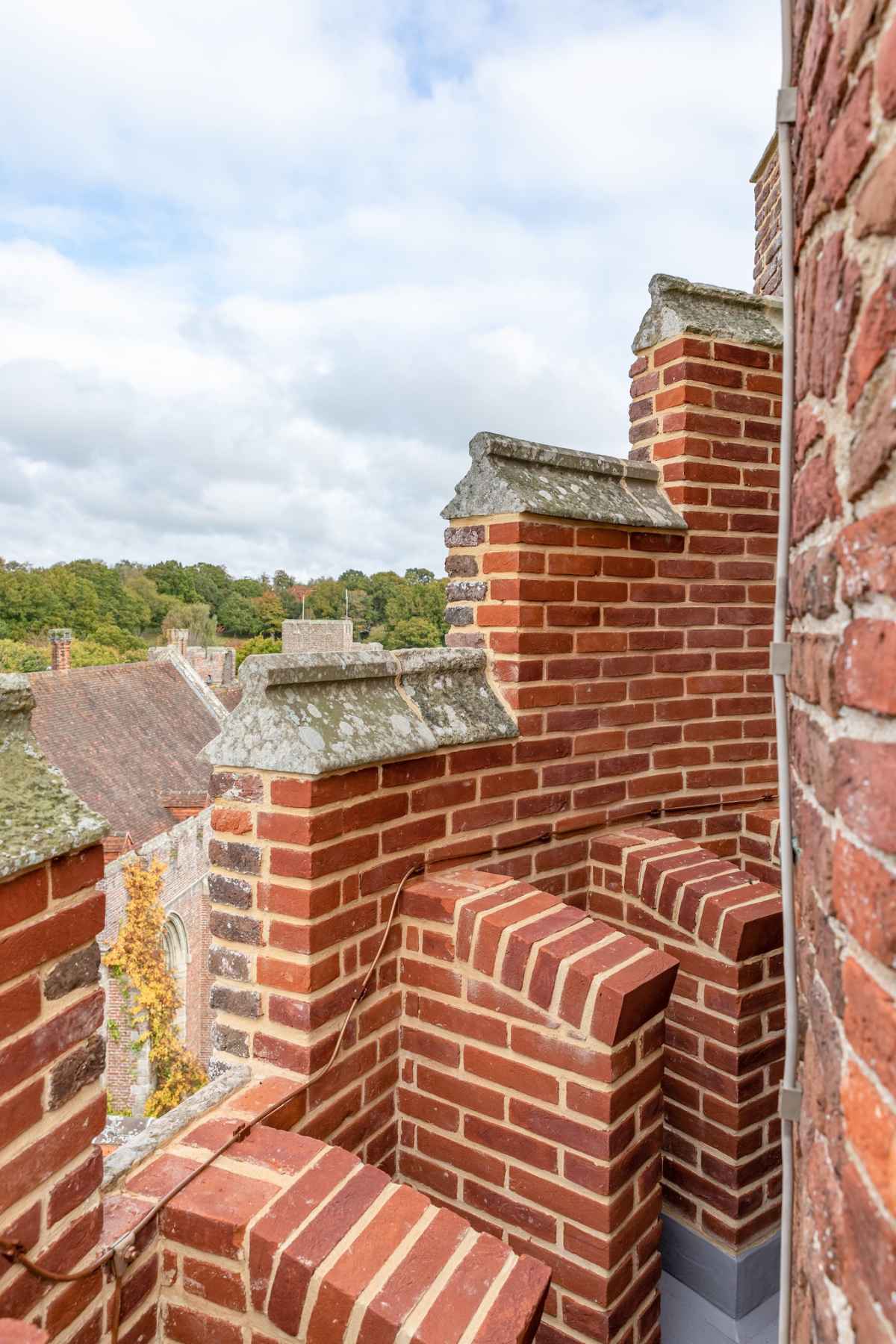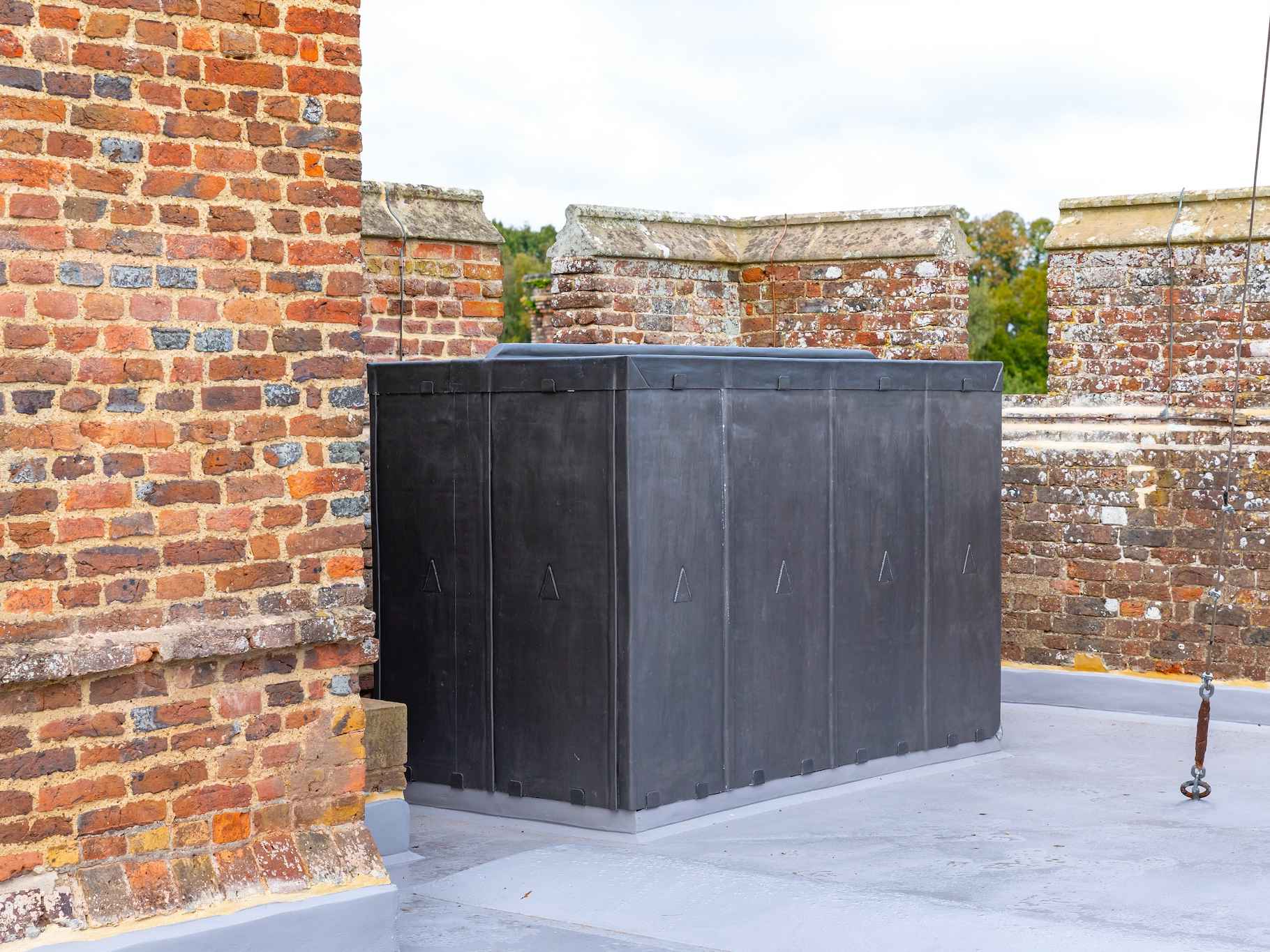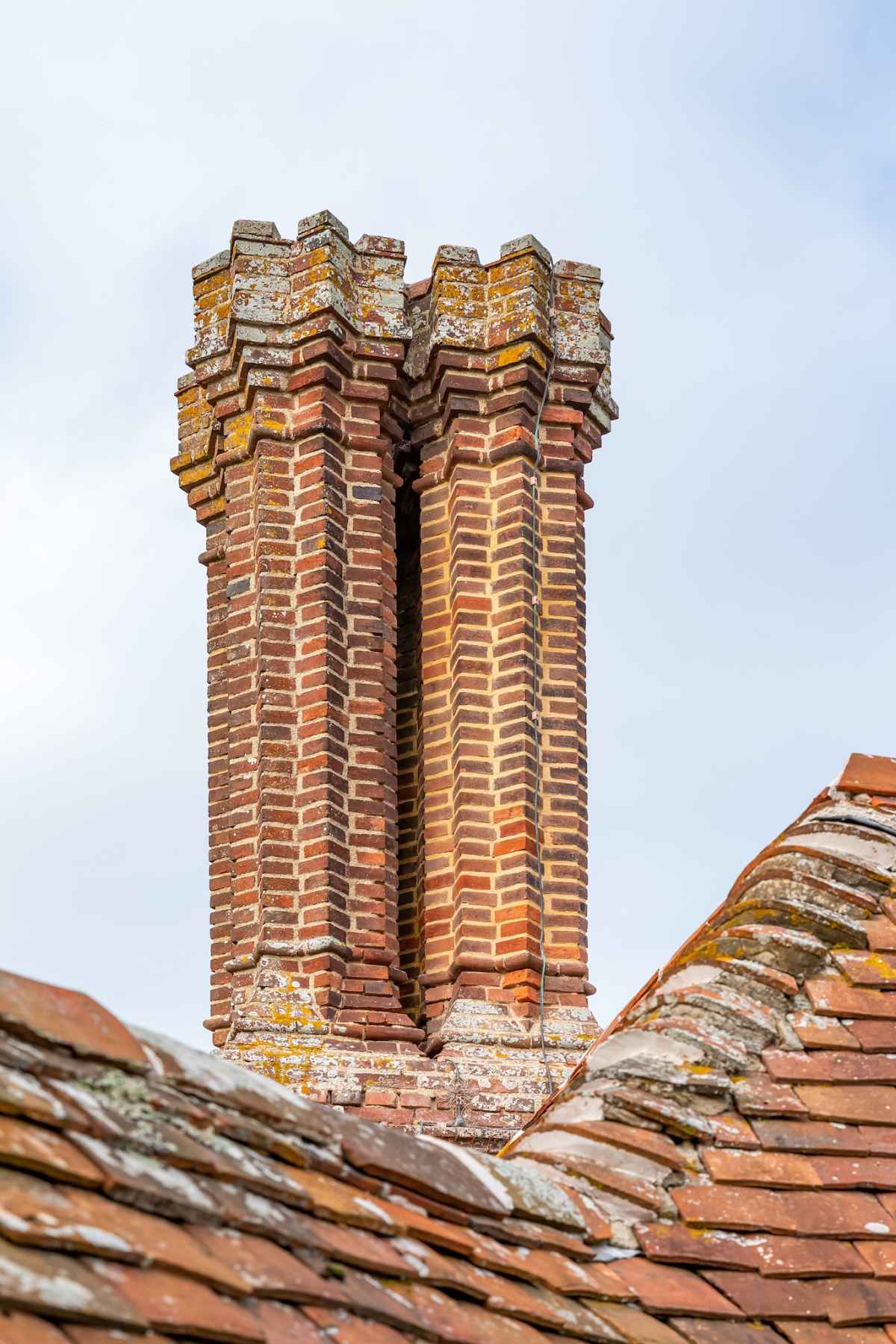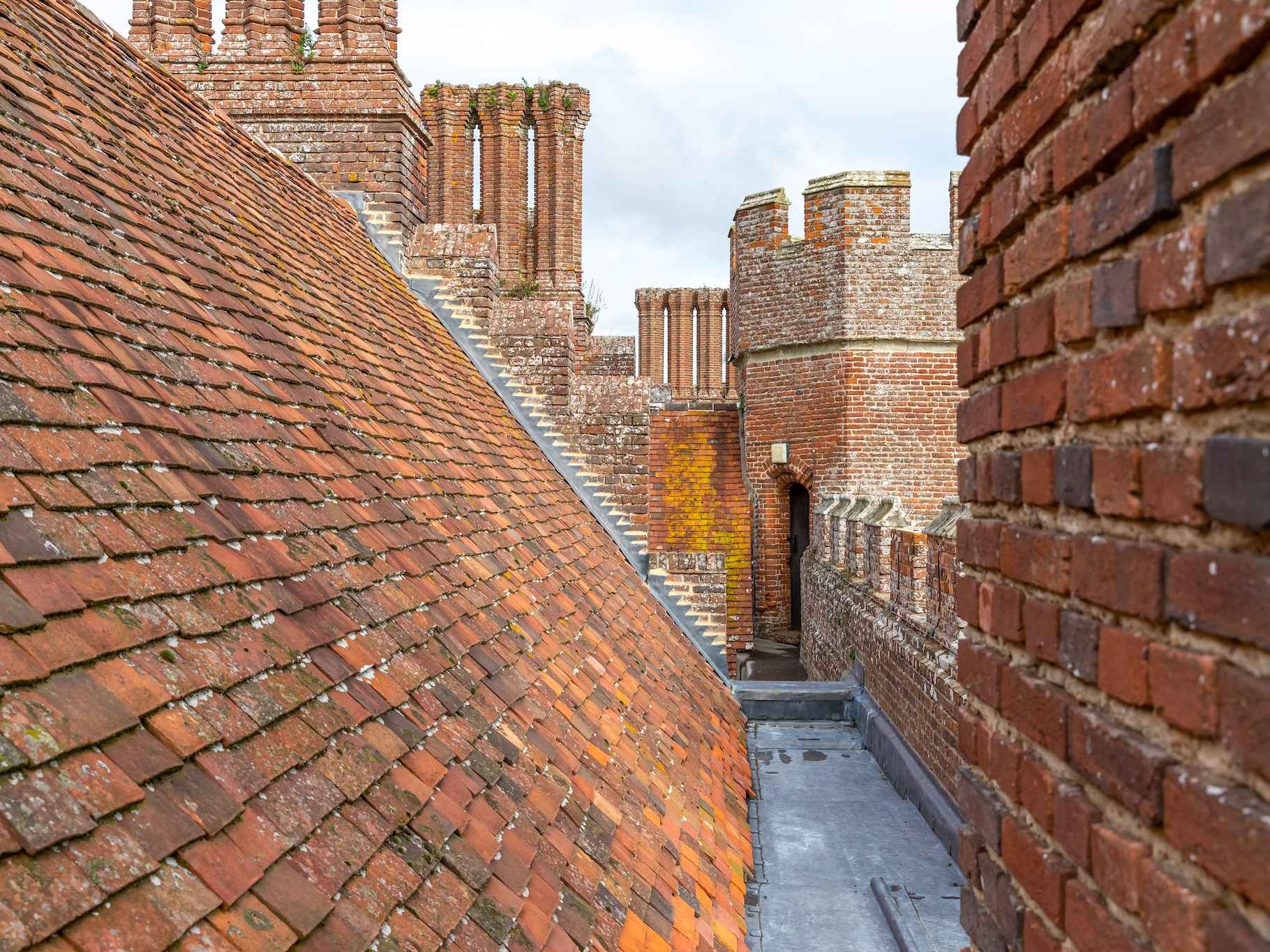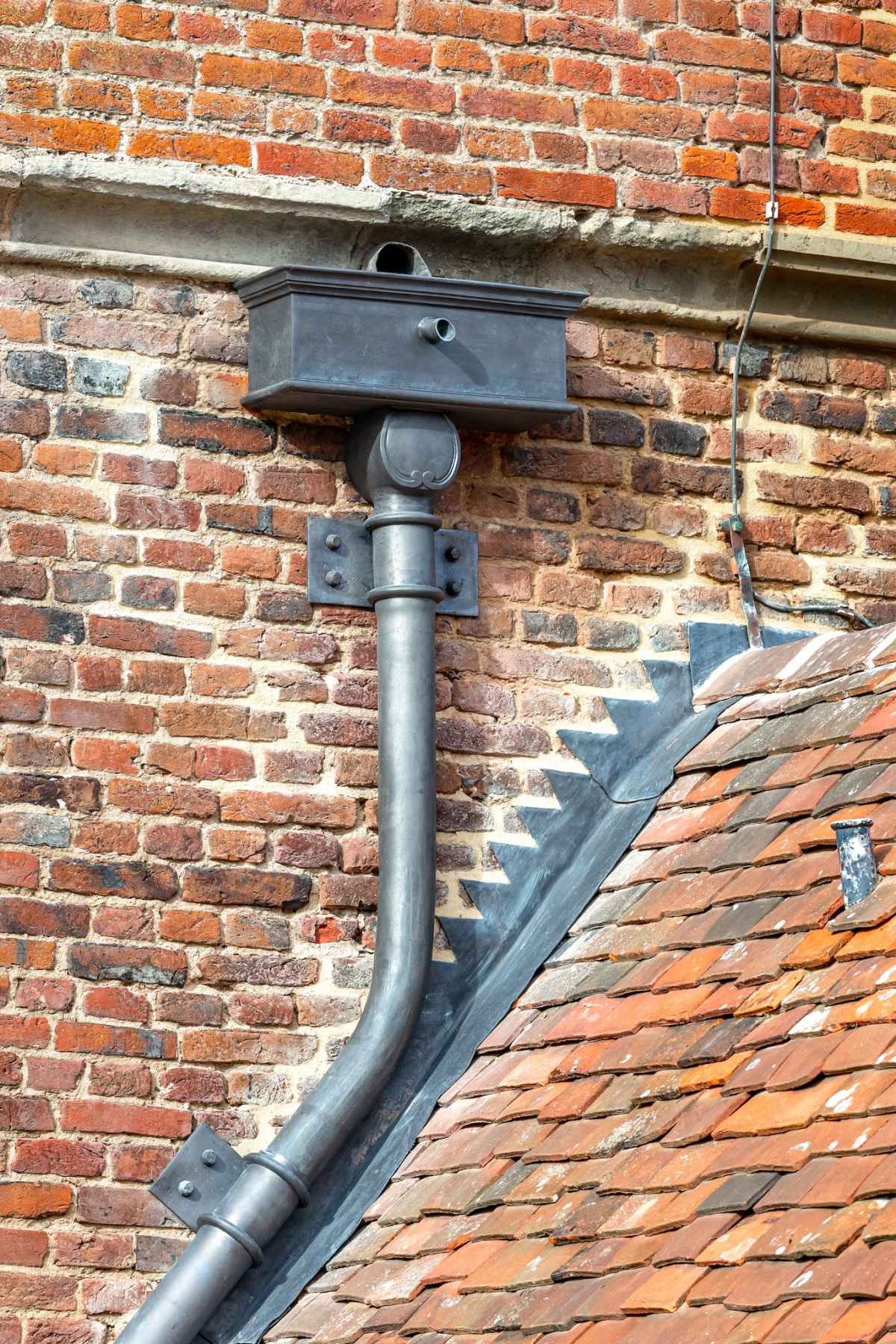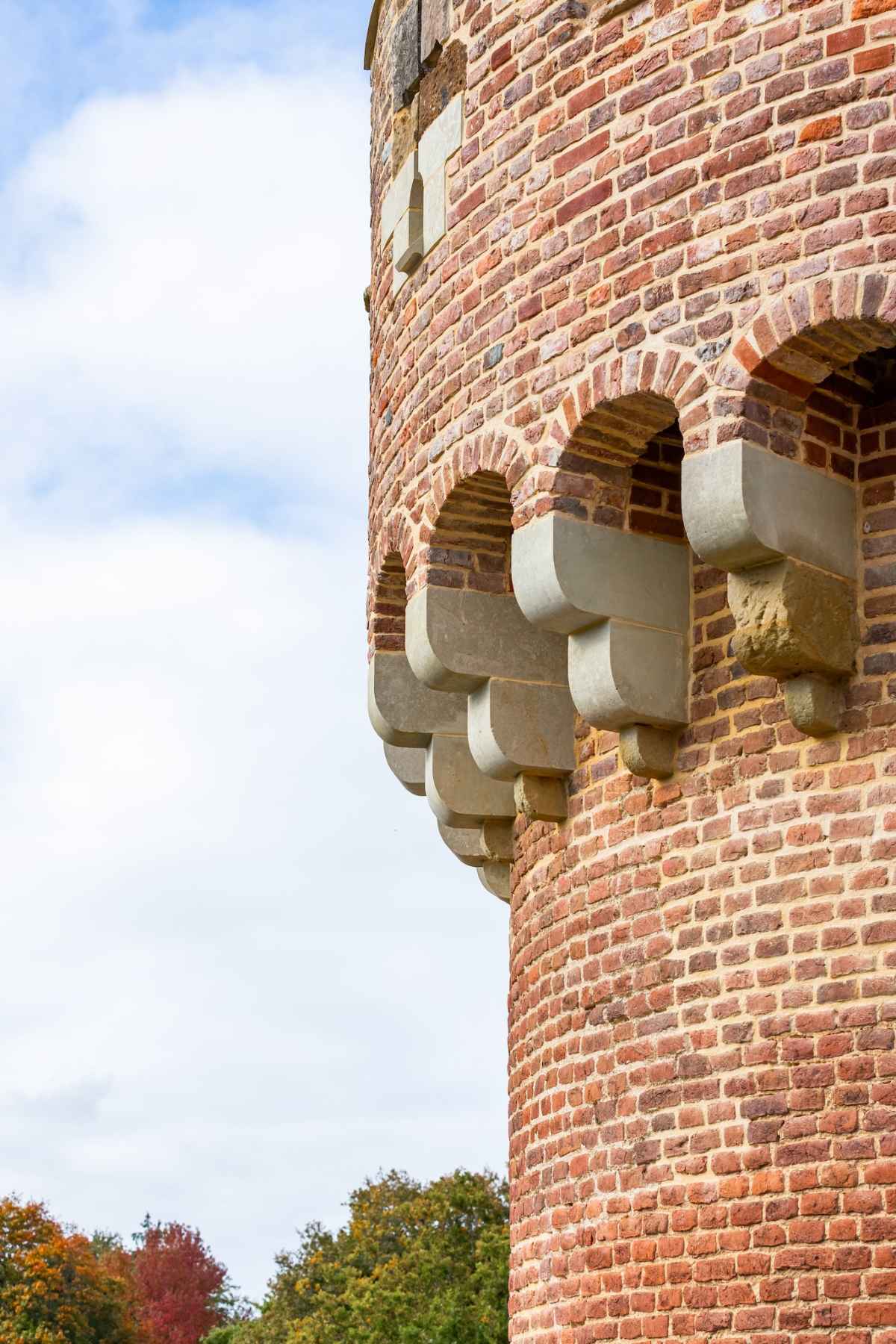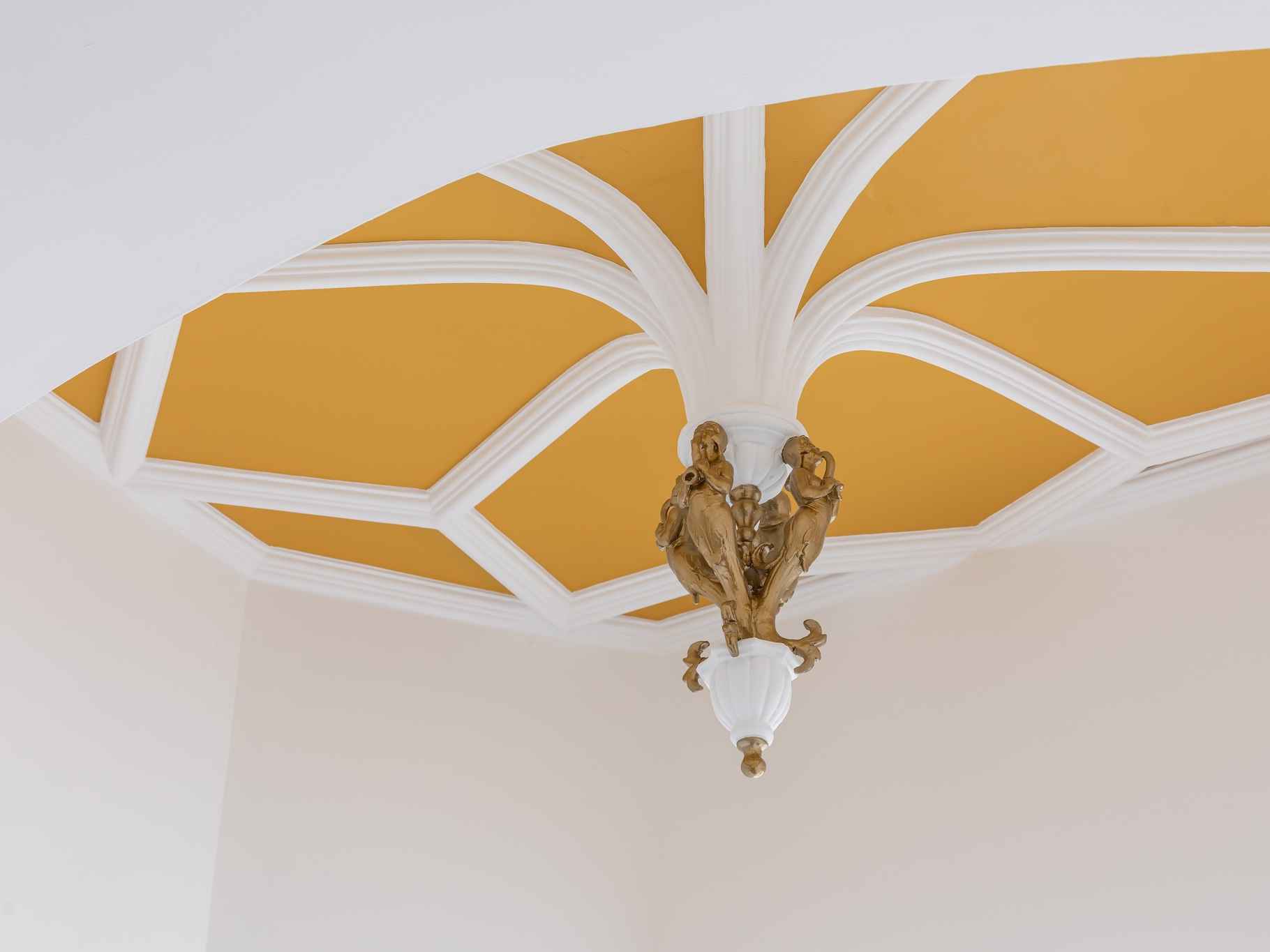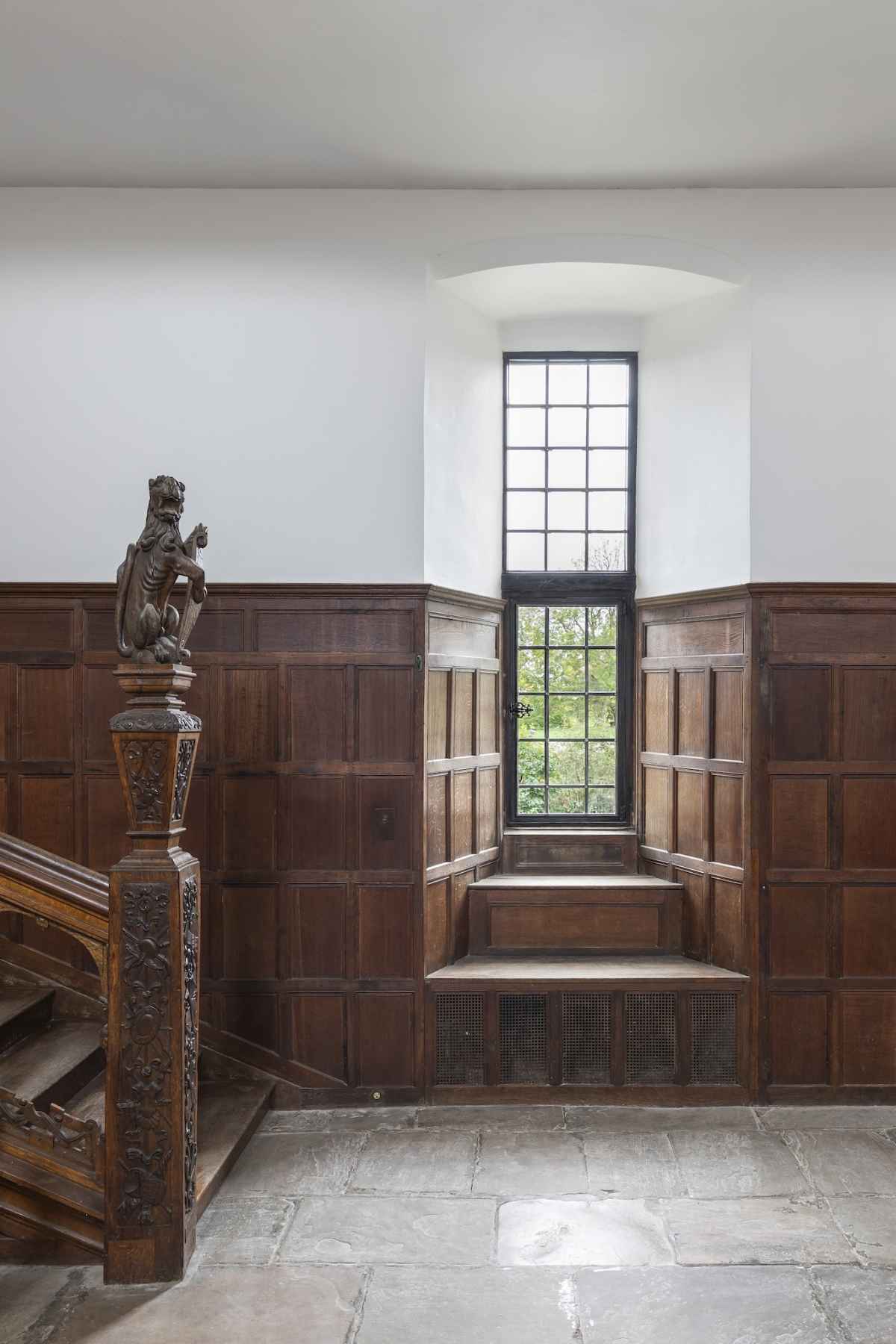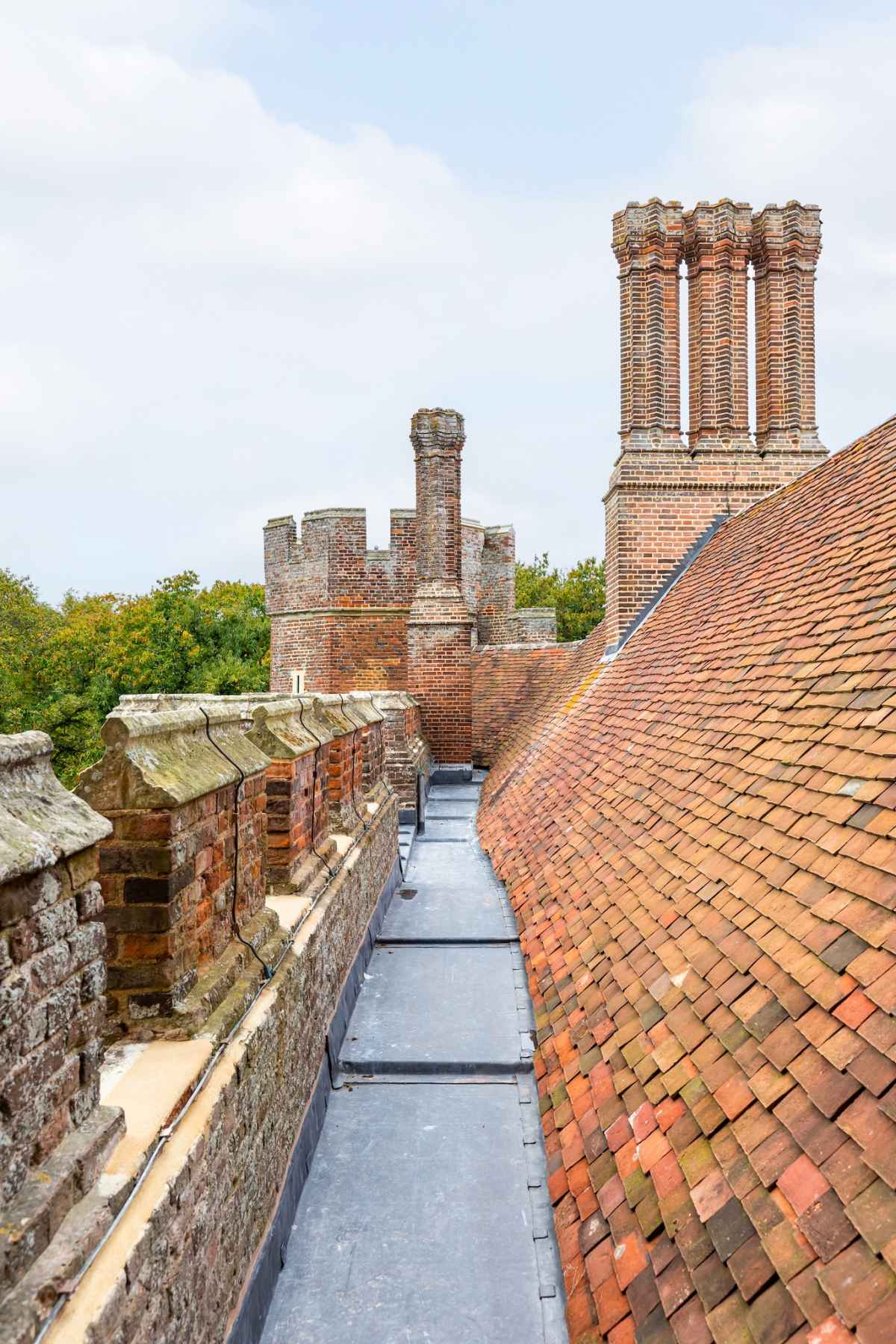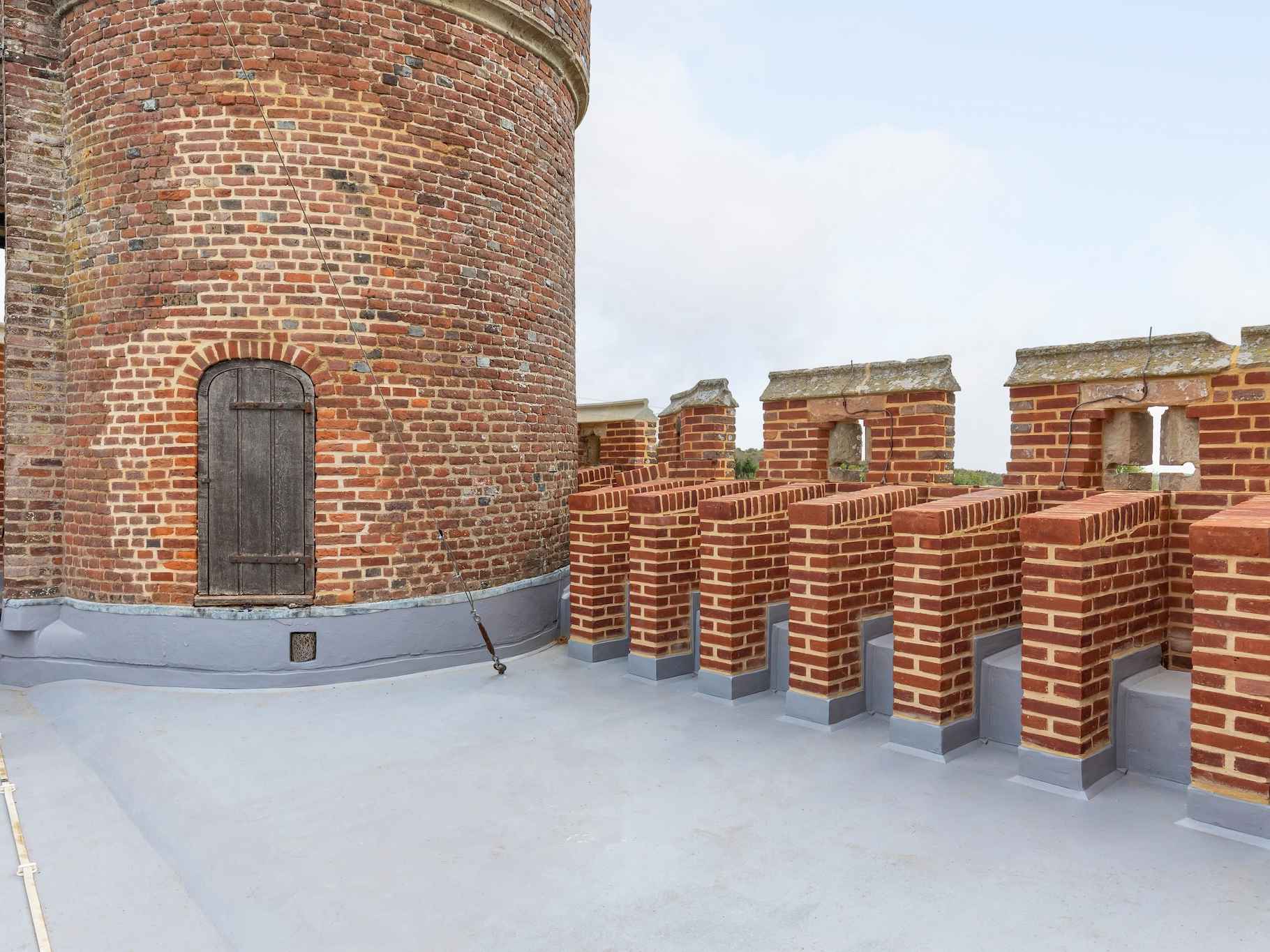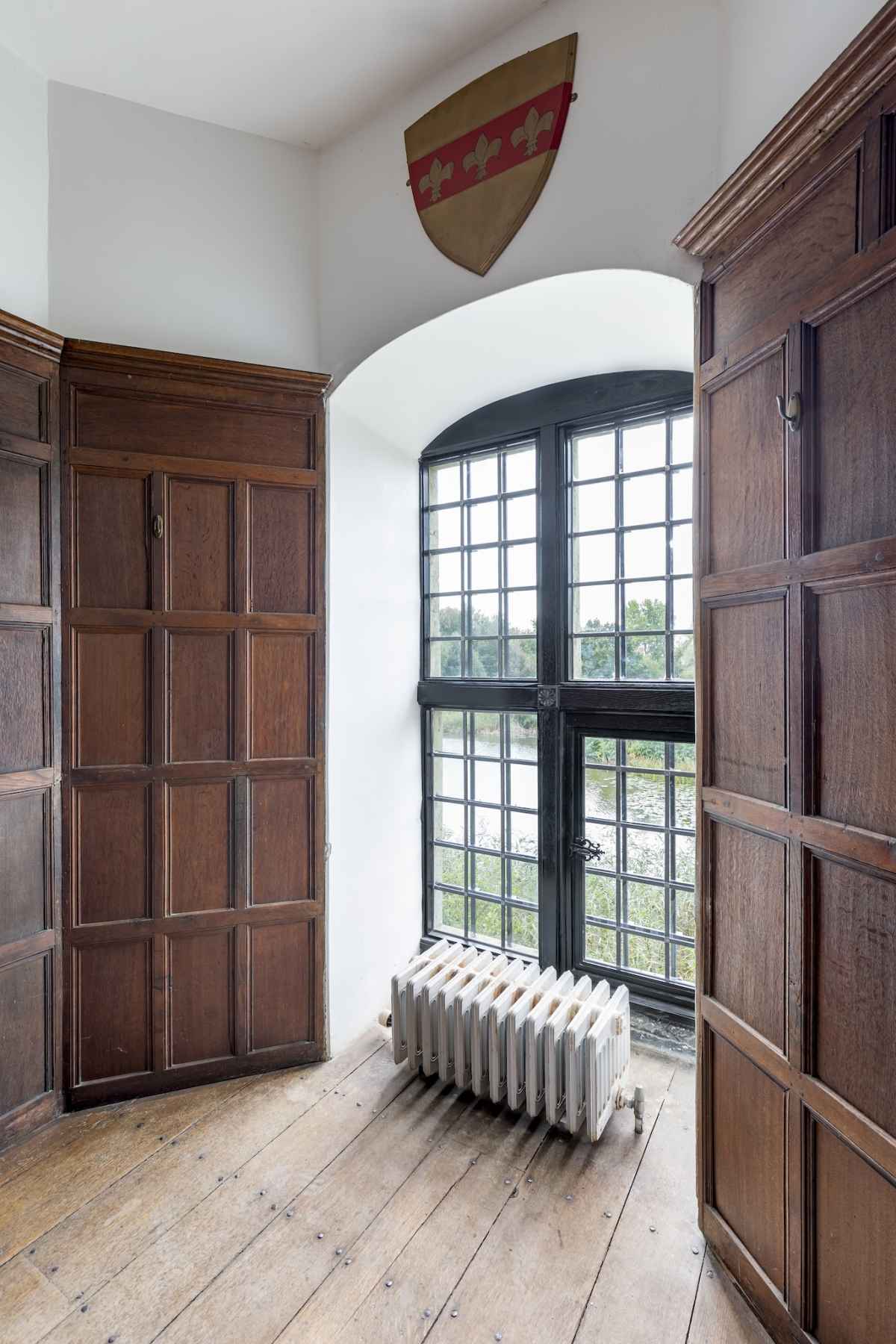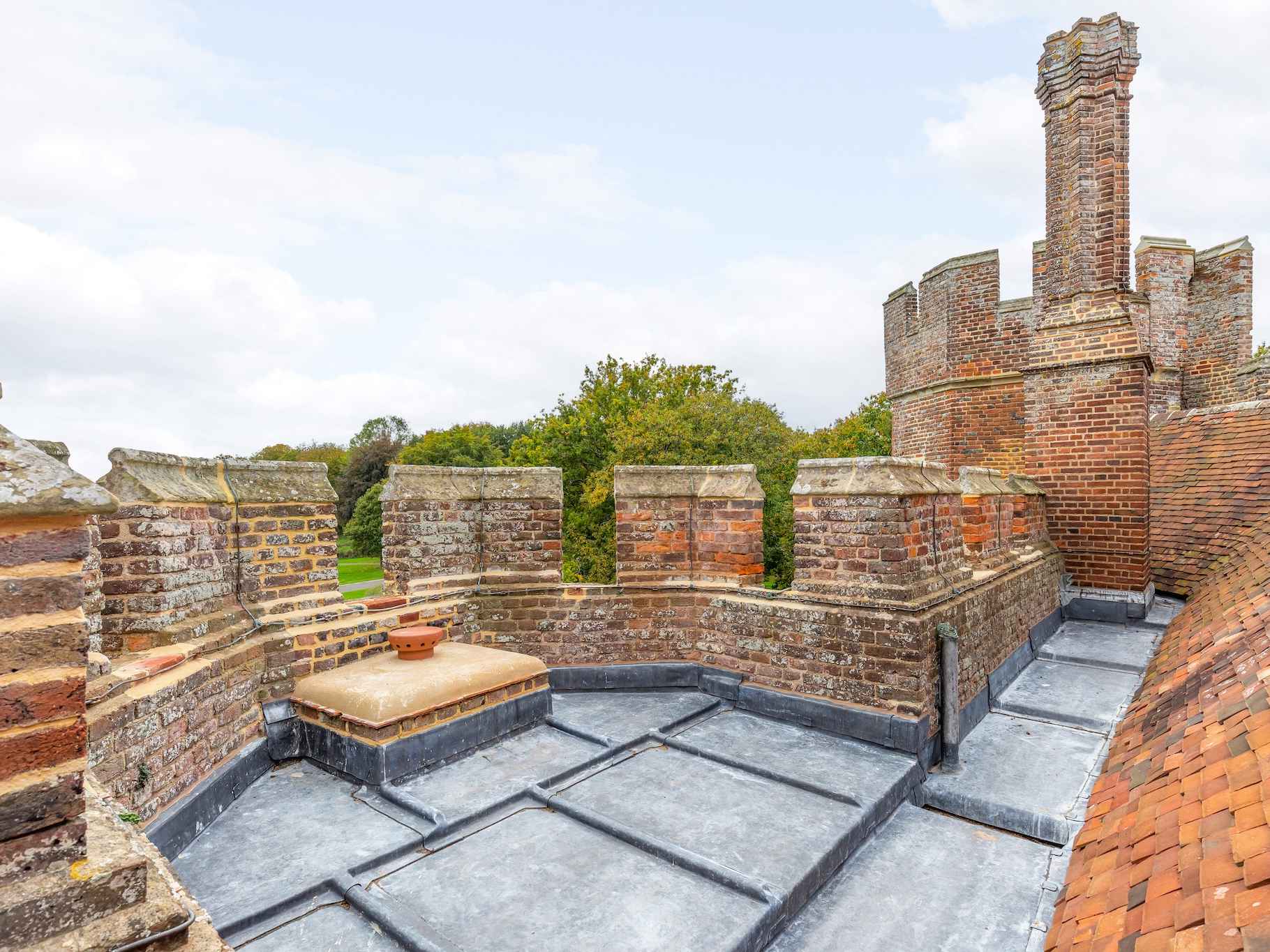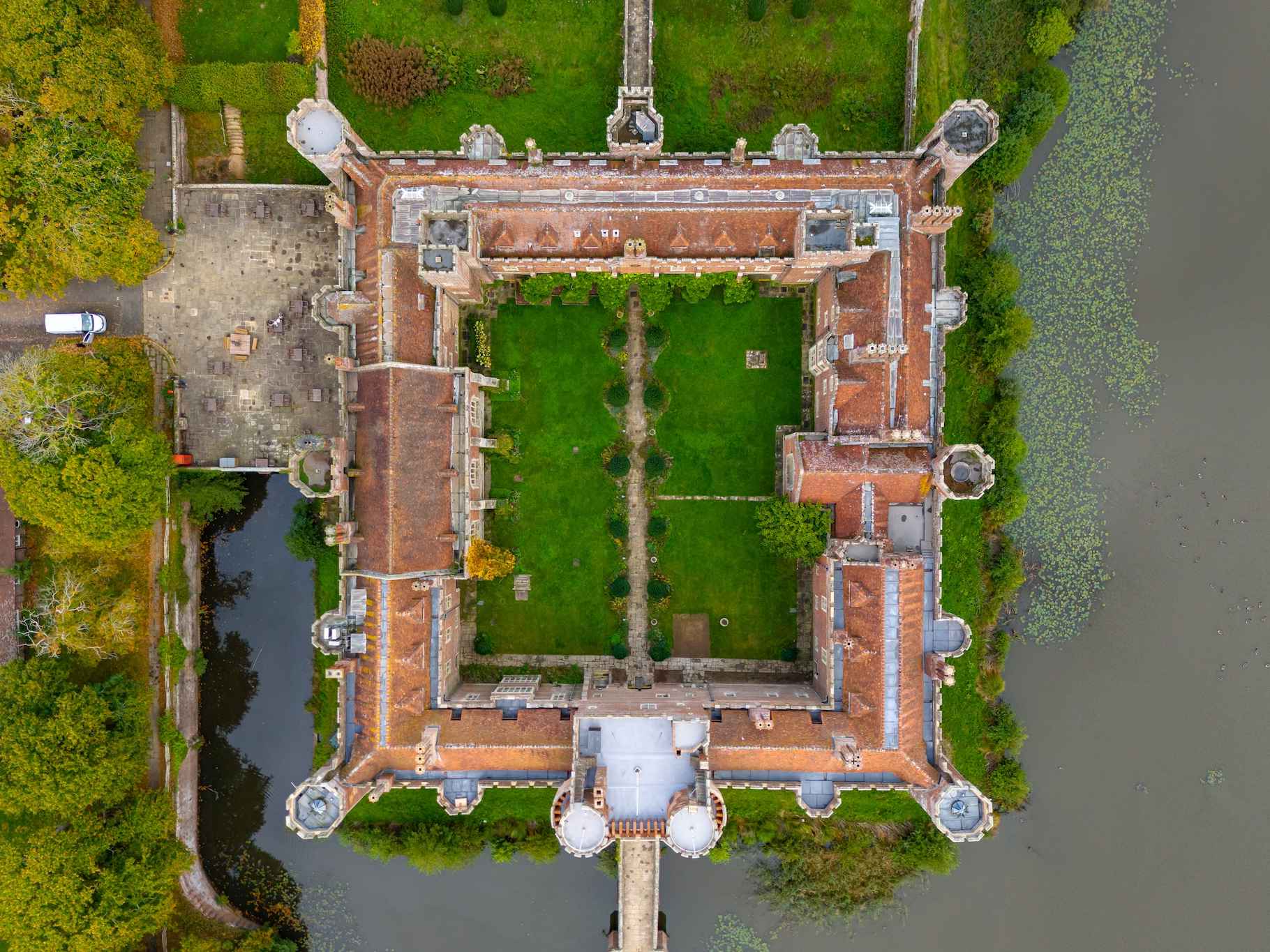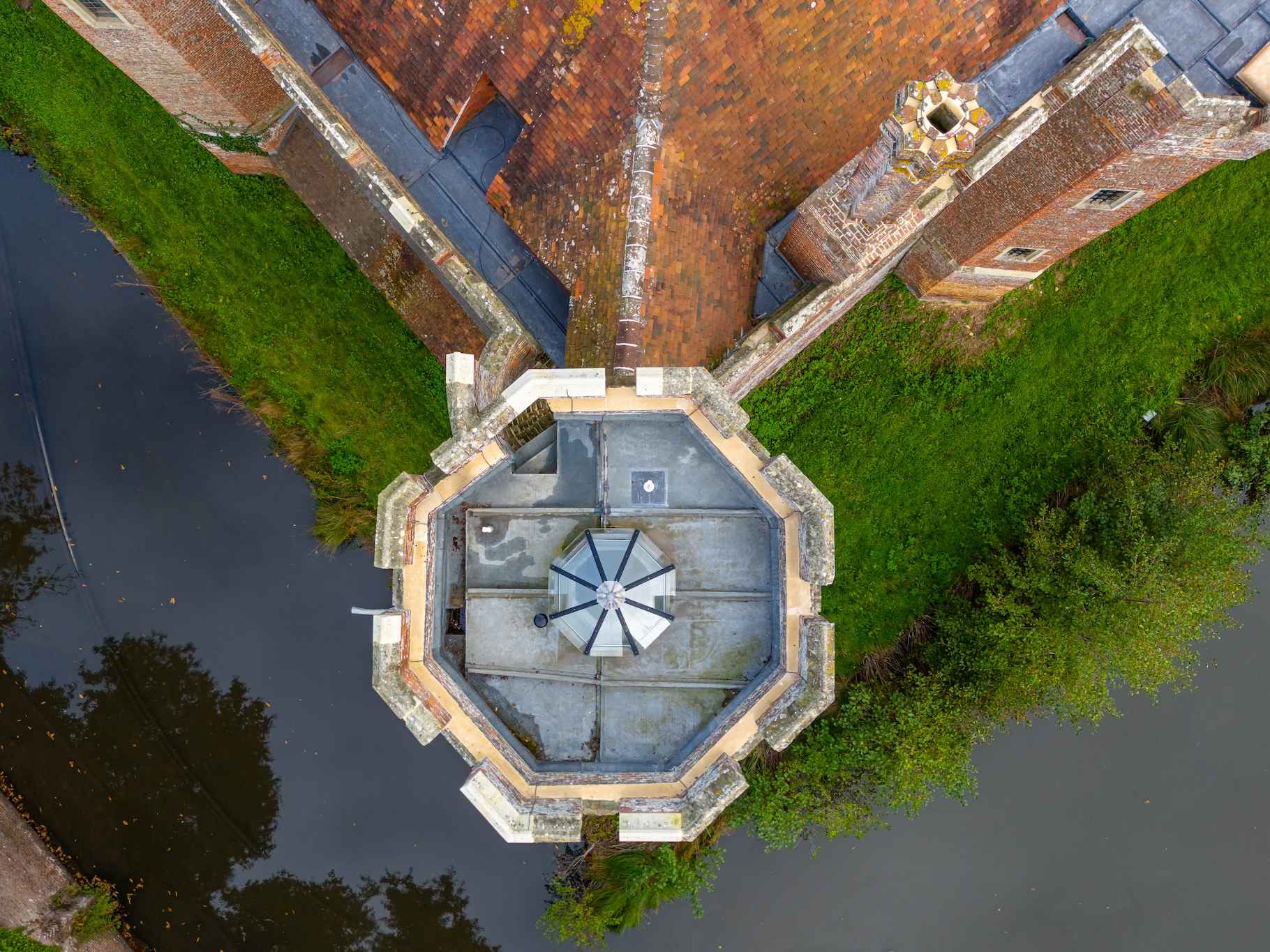Herstmonceux Castle
East Sussex
Herstmonceux Castle is rich in history dating back to the 15th Century, commissioned by Sir Roger Fiennes, Treasurer to the Household of Henry VI. The moated castle was purchased and then gifted to Queen’s University, Canada by industrialist and philanthropist Alfred Bader and his wife Isabel.
The project has brought together a team of specialists including structural engineers, archaeologists, and ecologists to ensure the highest standards of craftsmanship and care. Since the Castle is a Scheduled Monument we have worked closely with Historic England, ensuring all works are sympathetic to its historic fabric.
Our specialist team has undertaken an extensive programme of crucial structural repairs. Key elements of the works included significant restoration of the pitched roofs, crown lead roofs, lead parapet gutters, and asphalt roofs, as well as meticulous stonework and brickwork conservation across the castle’s historic façade in addition to other essential structural and restoration repairs internally throughout the South Wing.
Other works included:
- Replacing decayed stone corbels and strengthening the gatehouse parapets.
- Restoring stone dressings, such as window surrounds, string courses, and copings.
- Repairing leaded windows.
- Overhauling rainwater goods and addressing cracking in the southwest and southeast towers.
One of the key challenges has been ensuring the project can continue during colder months. Lime-based mortar, essential for the repairs, required specific temperatures to cure properly. To address this, the project team created an insulated and heated scaffold enclosure on the gatehouse, with temperatures monitored remotely. This innovative solution has proven highly effective, allowing work to progress smoothly.
Another significant achievement has been addressing the cracking in the southwest and southeast towers. Intrusive investigations revealed that the cracking was caused by corroded steelwork within the tower floors. It was agreed upon to replace the floors and provide adequate support to the walls, ensuring the long-term stability of these structures.
This project represents a rare opportunity to preserve and enhance one of England’s most treasured architectural landmarks.
